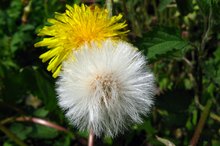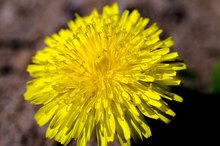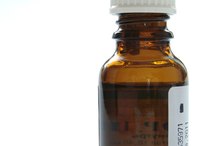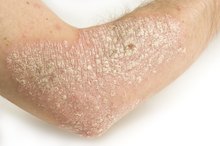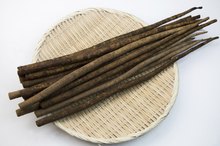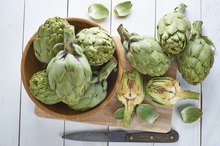What does fact checked mean?
At Healthfully, we strive to deliver objective content that is accurate and up-to-date. Our team periodically reviews articles in order to ensure content quality. The sources cited below consist of evidence from peer-reviewed journals, prominent medical organizations, academic associations, and government data.
- WomensHealth.gov: Premenstrual Syndrome (PMS) Fact Sheet
- WomensHealth.gov: Menstruation and the Menstrual Cycle Fact Sheet
The information contained on this site is for informational purposes only, and should not be used as a substitute for the advice of a professional health care provider. Please check with the appropriate physician regarding health questions and concerns. Although we strive to deliver accurate and up-to-date information, no guarantee to that effect is made.
Dandelion Root & Menstruation
Despite its vibrant yellow flowers, the dandelion plant is generally seen as a weed that invades your backyard. However, both the root and the leaves of the dandelion plant are used for many health purposes, including to ease symptoms of menstruation. The roots are fresh in early spring or late autumn or are available dried or in tinctures. Talk to your doctor before taking dandelion.
If you are experiencing serious medical symptoms, seek emergency treatment immediately.
Dandelion for Menstruation
Dandelion’s main health benefits are not for menstruation, but instead to stimulate and cleanse the pancreas, liver, gallbladder and kidneys and to ease the digestive system. Nonetheless, some of its properties might extend themselves to the symptoms of menstruation and premenstrual syndrome. It can help heavy bleeding, a missed period, menstrual headaches, constipation and anemia.
Considerations
Dandelion Root Vs. Dandelion Leaf
Learn More
The leaves of the dandelion might also help menstrual and premenstrual symptoms. The leaves, but not the roots, are diuretic, which can relieve water retention from menstruation. They also provide potassium, whereas many other diuretics take it away from your body. Dandelion leaves also provide many of the same benefits of dandelion roots.
- The leaves of the dandelion might also help menstrual and premenstrual symptoms.
- The leaves, but not the roots, are diuretic, which can relieve water retention from menstruation.
Considerations
There are a number of ways you can take dandelion 3. Make a tea by steeping 1 to 2 tsp. of the leaves or 1/2 to 2 tsp. of the root in a cup of boiling water for five to ten minutes. As an easier method, you can buy prepackaged teabags and follow package directions to make the tea. Other options are to take a leaf or root tincture or a powdered extract of the leaf or root, which you can find in health food and specialty stores.
- There are a number of ways you can take dandelion 3.
- As an easier method, you can buy prepackaged teabags and follow package directions to make the tea.
Warnings
Dandelion & Breastfeeding
Learn More
Taking dandelion might cause a few side effects and drug interactions. You might be allergic to it, especially if you are allergic to marigolds, chamomile, yarrow, ragweed, chrysanthemums, daisies or iodine. It can also cause mouth sores, heartburn and skin irritation. Talk to your doctor before taking it if you have gallstones or another gallbladder condition, or if you are taking antacids, lithium or antibiotics.
- Taking dandelion might cause a few side effects and drug interactions.
Related Articles
References
- “The Complete Woman’s Herbal”; Anne McIntyre: 1994
- “The Essential Natural Health Bible”; Nerys Purchon; 2006
- University of Maryland Medical Center: Dandelion
- Clare B, Conroy R, Spelman K. The Diuretic Effect in Human Subjects of an Extract of Taraxacum officinale Folium over a Single Day. J Altern Complement Med. 2009;5(8):929-34. doi:10.1089/acm.2008.0152
- Yang Y, Li S. Dandelion Extracts Protect Human Skin Fibroblasts from UVB Damage and Cellular Senescence. Oxid Med Cell Longev. 2015;2015:619560. doi:10.1155/2015/619560
- Rasmussen A, Jacob SE. Dandelion: An Important Allergen in Atopic Children. Dermatitis. 2017;28(2):166. doi:10.1097/DER.0000000000000262
- Wirngo F, Lambert M, Jeppesen P. The Physiological Effects of Dandelion (Taraxacum Officinale) in Type 2 Diabetes. Rev Diabet Stud. 2016;13(2-3):113-31. doi:10.1900/RDS.2016.13.113
- Cai L, Wan D, Yi F, Luan L. Purification, Preliminary Characterization and Hepatoprotective Effects of Polysaccharides from Dandelion Root. Molecules. 2017;22(9):1409. doi:10.3390/molecules22091409
- Ovadje P, Ammar S, Guerrero JA, Arnason JT, Pandey S. Dandelion root extract affects colorectal cancer proliferation and survival through the activation of multiple death signaling pathways. Oncotarget. 2016;7(45):73080-73100. doi:10.18632/oncotarget.11485
- Martinez M, Poirrier P, Chamy R, et al. Taraxacum officinale and related species-An ethnopharmacological review and its potential as a commercial medicinal plant. J Ethnopharmacol. 2015;169:244-262. doi:10.1016/j.jep.2015.03.067
- Jargin SV. Soy and phytoestrogens: possible side effects. Ger Med Sci. 2014;12:Doc18. doi:10.3205/000203
- American Botanical Council. Herbal Medicine: Expanded Commission E.
- Domitrović, R.; Jakovac, H.; Romić, Z. et al. Antifibrotic Activity of Taraxacum Officinale Root in Carbon Tetrachloride-induced Liver Damage in Mice. J Ethnopharmacol. 2010 Aug 9;130(3):569-77. doi:10.1016/j.jep.2010.05.046.
- You, Y.; Yoo, S.; Yoon, H. et al. In Vitro and In Vivo Hepatoprotective Effects of the Aqueous Extract From Taraxacum Officinale (Dandelion) Root Against Alcohol-Induced Oxidative Stress. Food Chem Toxicol. 2010 Jun;48(6):1632-7. doi:http://dx.doi.org/10.1016/j.fct.2010.03.037.
Writer Bio
Sharon Therien has been writing professionally since 2007. She specializes in health writing and copywriting for websites, blogs and businesses. She is a Certified Yoga Teacher and a Reiki Master with a Certificate in Fitness and Nutrition. Therien has a Master of Arts in sociology from Florida Atlantic University.
